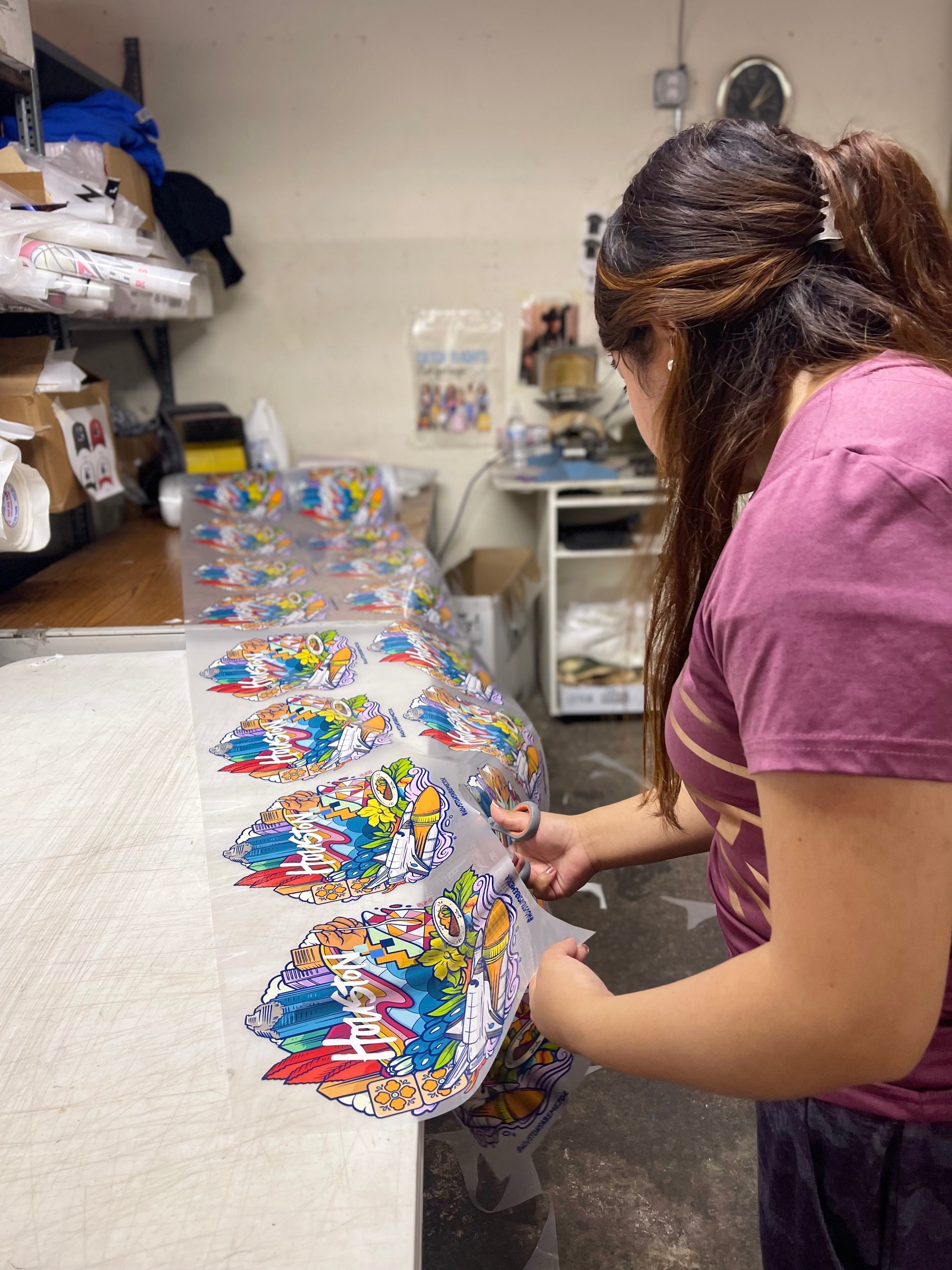DTF Printing Transformation: Releasing Imagination in Textile Style and Production
DTF Printing Transformation: Releasing Imagination in Textile Style and Production
Blog Article
The Future of Fashion: Discovering DTF Printing Innovation in the Textile Industry
Among these improvements, Straight to Film (DTF) printing technology has emerged as an appealing competitor, using one-of-a-kind capacities and opportunities for designers and makers alike. This sophisticated printing approach has actually triggered passion due to its possible to change typical fabric printing procedures.
Advancement of Textile Printing
From the ancient human beings making use of methods like block printing to the digital change of today, textile printing has continually pressed limits. As the craft spread to other components of the world, brand-new techniques such as display printing and roller printing arised during the Industrial Change, transforming the textile sector.
The introduction of digital fabric printing in the late 20th century noted a significant shift in the direction of even more functional and sustainable printing techniques. The advancement of textile printing showcases a rich history of creative thinking, ingenuity, and technical progress in the world of fashion and style.
Advantages of DTF Modern Technology
With the evolution of textile printing methods from old techniques like block printing to contemporary technologies such as digital printing, the introduction of Direct-to-Fabric (DTF) technology has substantially boosted the performance and sustainability of fabric printing procedures. Among the key advantages of DTF modern technology is its capacity to straight publish layouts onto fabric without the requirement for transfer papers, which decreases waste and simplifies the manufacturing process. Additionally, DTF printing permits for greater color vibrancy and information precision contrasted to conventional techniques, allowing fabric suppliers to create intricate and premium styles effortlessly.
Furthermore, DTF innovation is known for its convenience, as it can be made use of on different types of fabrics, including all-natural fibers like cotton, wool, and silk, as well as artificial products such as polyester and nylon (DTF Printing). This versatility opens a variety of possibilities for developers and makers to explore various appearances and products, resulting in more innovative and one-of-a-kind products in the garment industry. On the whole, the application of DTF innovation stands for a considerable development in fabric printing, providing numerous benefits that contribute to the future sustainability and creative thinking of the market
Sustainability in Style Production
Emphasizing green methods is vital in contemporary style manufacturing, lining up with the expanding consumer need for lasting products. Over the last few years, the fashion sector has actually faced boosting scrutiny because of its substantial environmental effect, consisting of excessive Discover More water use, chemical pollution, and textile waste. As a response, lots of style brands are now including lasting practices right into their manufacturing procedures to reduce damage to the setting.
Sustainability in vogue production incorporates numerous aspects, such as utilizing natural and recycled products, reducing energy usage, applying ethical labor methods, and advertising openness throughout the supply chain. Additionally, improvements in modern technology, like DTF printing, offer opportunities to additionally improve sustainability in fabric production. This modern technology enables specific printing on fabrics, decreasing ink waste and water usage compared to standard printing techniques.
Style Flexibility and Modification

Additionally, DTF printing facilitates personalization on a range formerly unattainable, permitting for personalized garments and one-of-a-kind pieces customized to specific preferences. Generally, DTF printing modern technology transforms the style landscape in the fabric industry, using countless possibilities for innovative expression and tailored fashion.
Effect on Supply Chain & Market Trends
DTF printing modern technology in the textile sector is reshaping supply chain characteristics and influencing market fads through its performance and modification capacities. By allowing on-demand printing and getting rid of the need for huge supplies, DTF innovation improves the supply chain process.
Moreover, the personalization possibility of DTF printing innovation is transforming the market fads in the textile market. As an outcome, DTF technology is driving a change in the direction of more customer-centric and ingenious methods within the fabric sector, shaping the future of fashion.

Conclusion
To conclude, DTF printing modern technology is transforming the fabric sector by offering many advantages such as layout freedom, personalization, and sustainability. This cutting-edge technology is reshaping the future of fashion production, affecting supply chains, and driving market patterns towards a lot more green and efficient practices. As the industry remains to evolve, DTF printing will play an essential function in shaping the method textiles are produced and consumed in the years to come.
From the ancient civilizations using strategies like block printing to the electronic read the article change of today, fabric printing has actually continuously pushed limits. As the craft spread to other components of the globe, brand-new techniques such as screen printing and roller printing emerged throughout the Industrial Change, reinventing the textile industry.
The introduction of electronic fabric printing in the late 20th century marked a significant change in the direction of more sustainable and functional printing methods.With the evolution of fabric printing methods from ancient approaches like block printing to modern-day innovations such as digital printing, the intro of Direct-to-Fabric (DTF) technology has actually dramatically boosted the performance and sustainability of fabric printing processes (DTF Printing).In response navigate here to the important change towards sustainability in fashion manufacturing, the fostering of cutting-edge innovations like DTF printing not only addresses environmental concerns but likewise opens up opportunities for unequaled layout flexibility and customization in the textile market
Report this page